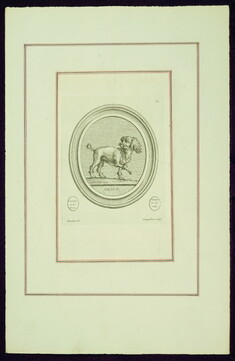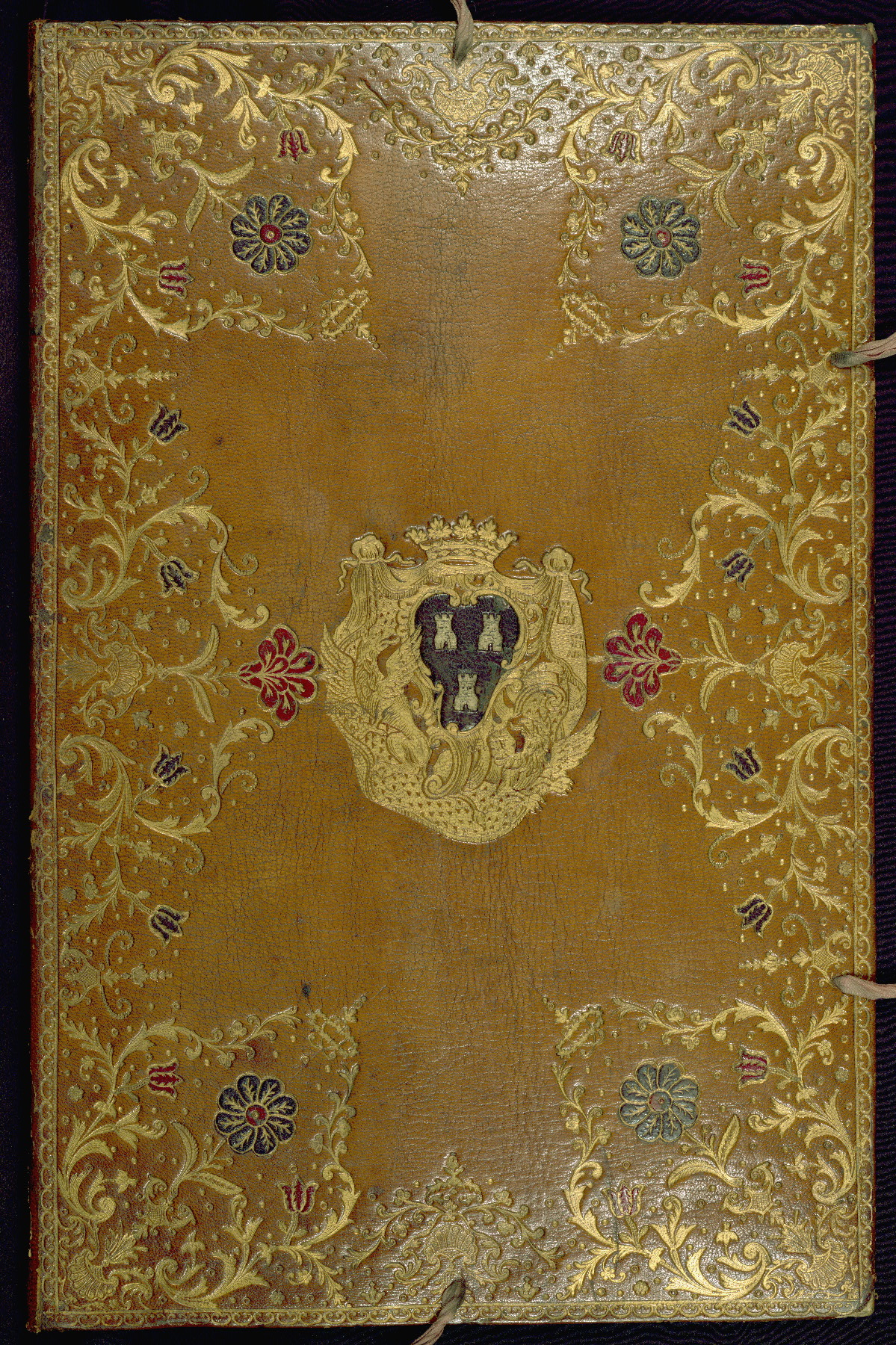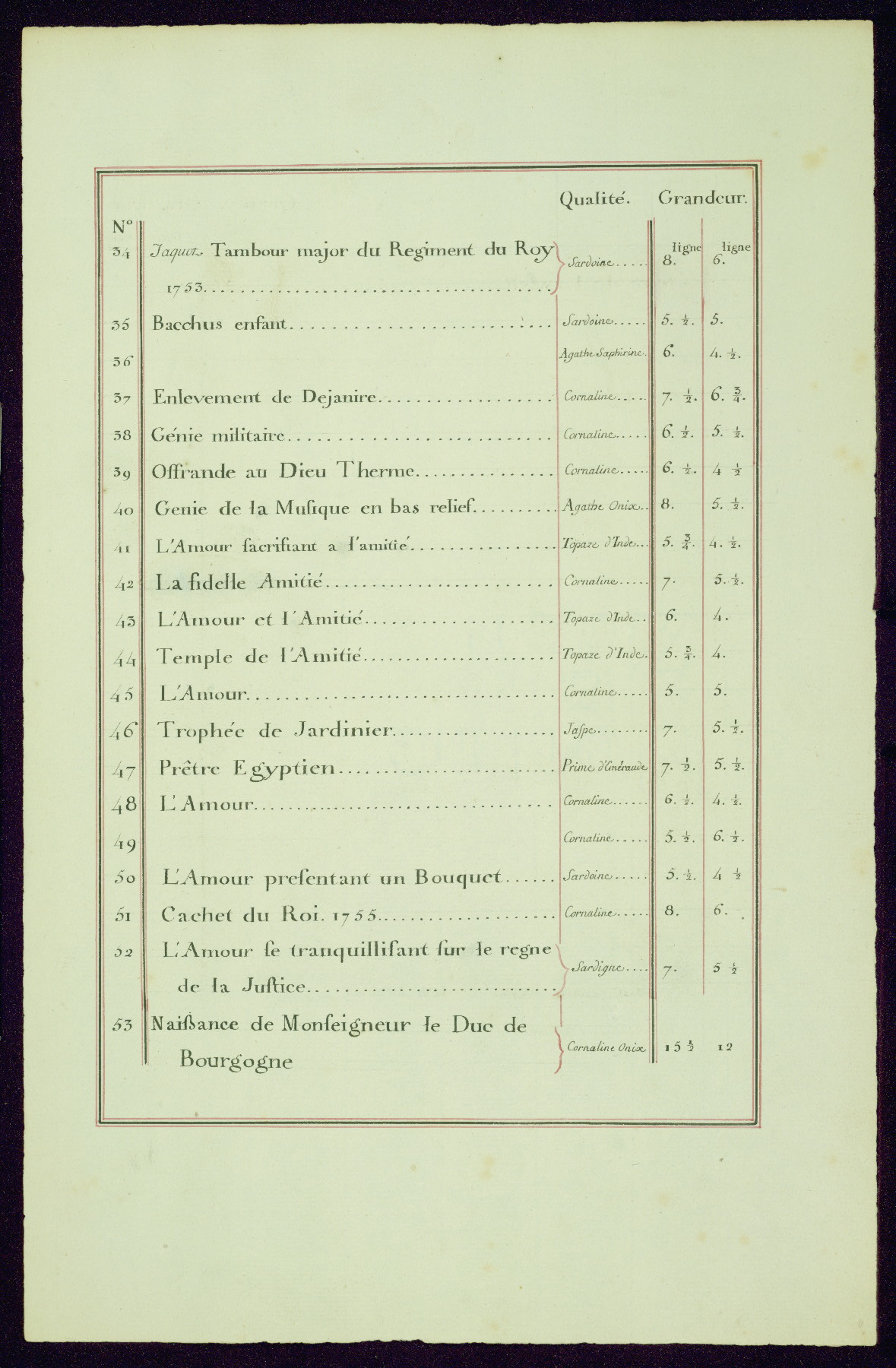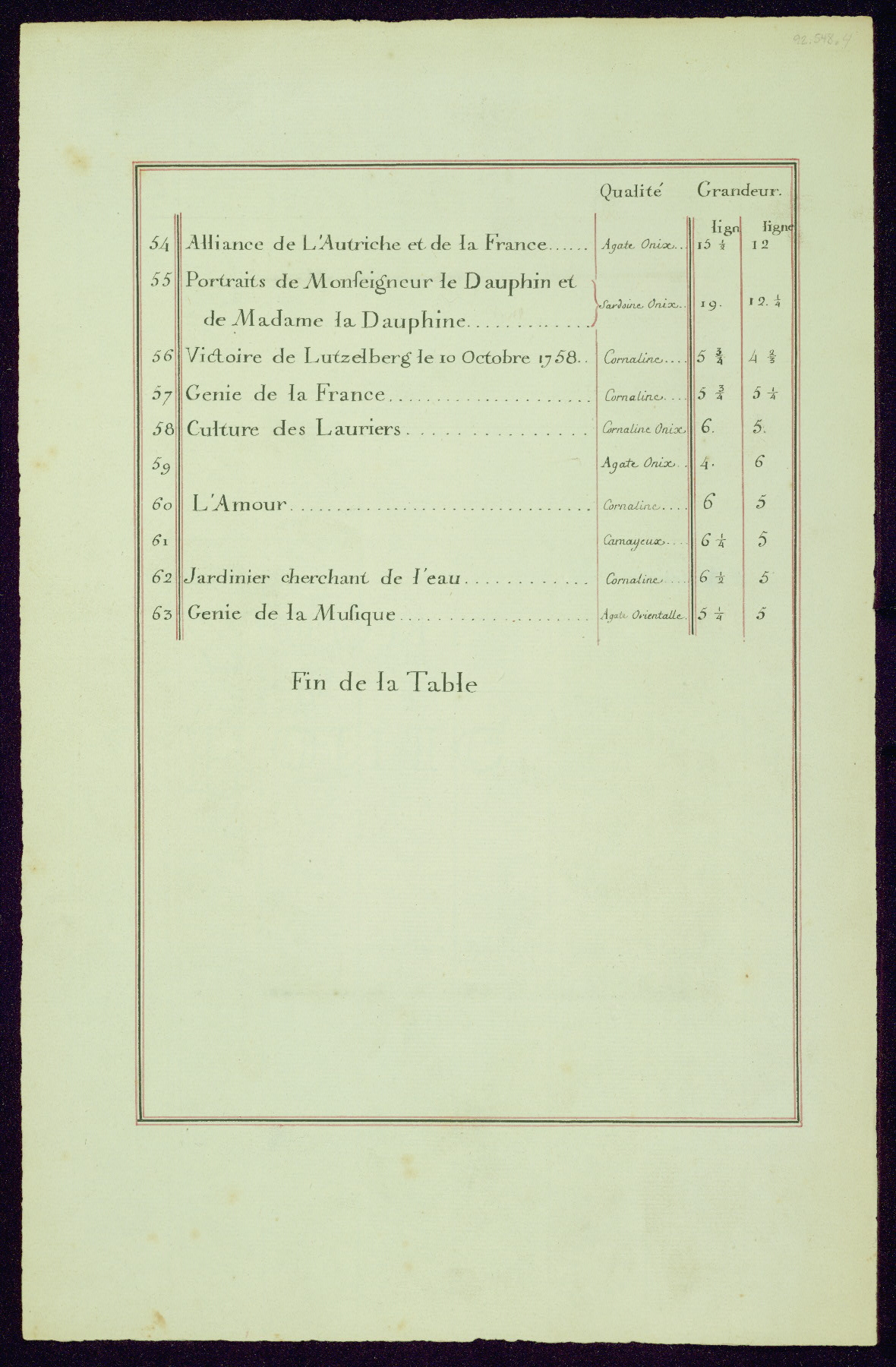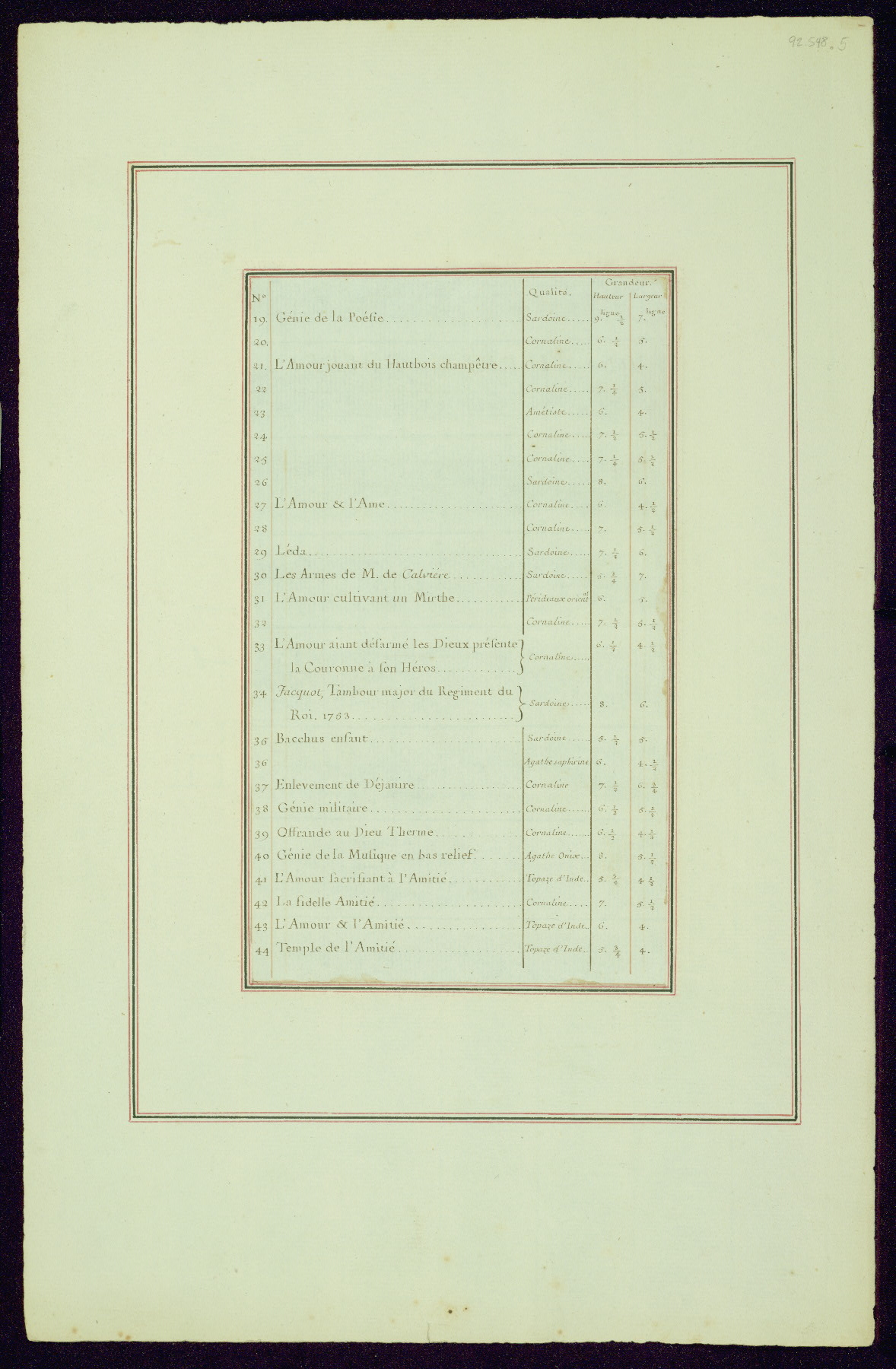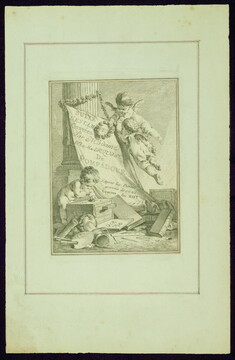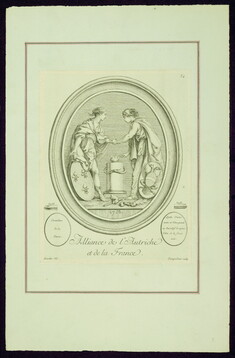Suite d'estampes gravées par Madame la marquise de Pompadour, d'après les pierres gravées de Guay, graveur du roy
(Manuscripts and Rare Books, 18th and 19th Centuries )
Madame de Pompadour, the favorite mistress of King Louis XV (1710–1774), is best remembered as an enthusiastic patron of France’s leading artists and intellectuals. She was also a thinker and artist in her own right. Around 1755 Pompadour orchestrated and helped execute a highly sophisticated project: the Suite of Prints Engraved by Madame de Pompadour after the Carved Gems of Jacques Guay. While Pompadour’s involvement with the arts has been portrayed as frivolous, the Suite of Prints reveals the complexity of her interest, especially in the fluid relationships between different visual media: the project translated carved gems into drawings, and drawings into etchings and engravings.
Each print in Madame de Pompadour’s Suite results from the convergence of multiple artists and artistic processes. First, Jacques Guay carved an image onto a gemstone. Next, an artist—usually François Boucher or Joseph-Marie Vien—created a drawing of Guay’s carved gem. Pompadour herself then etched the drawing onto a metal plate, and a professional printmaker reinforced her etched lines with an engraving tool called a burin. Finally, an impression of the plate was made on paper to yield the finished print.
Madame de Pompadour’s ambitious printmaking project reflects the 18th-century mania for collecting ancient and modern carved gems. Pompadour gave Jacques Guay workspace in her residence at Versailles, commissioned him to carve dozens of cameos and intaglios. Pompadour’s prints are important records of Guay’s gems, as much of his work is lost, and the carved gems that do survive are often small and luminous, making it difficult to appreciate their designs. The prints enlarge the gems and enhance their motifs and imagery. Beneath an enlargement of each gem’s design, diagrams indicate the type of stone and its actual size.
But Pompadour’s goal was not simply to create precise records of the gems. Her printed images often re-interpret the carvings on the stones, taking advantage of stylistic individuality and the tonal possibilities of the print medium to transform them into new works of art. In the move from three to two dimensions, the images from the gems are brought to life in innovative ways.
Pompadour issued very few copies of the Suite—probably no more than 20—meant to circulate only to friends and acquaintances. By the late 19th century, only one example of the original edition was known to survive, but it subsequently disappeared from the historical record. New research has reestablished its significance and revealed that it was purchased in 1895 by Henry Walters.
Provenance
Provenance (from the French provenir, 'to come from/forth') is the chronology of the ownership, custody, or location of a historical object. Learn more about provenance at the Walters.
Jeanne Antoinette Poisson, Marquise de Pompadour, ca. 1755. Purchased by Henry Walters, Baltimore, 1895; by bequest to Walters Art Museum, 1931.
Exhibitions
| 2016 | Madame de Pompadour, Patron and Printmaker. The Walters Art Museum, Baltimore. |
Geographies
France, Paris (Place of Origin)
Measurements
Binding H: 14 13/16 × W: 16 3/4 in. (37.7 × 42.6 cm); Page H: 14 9/16 × W: 9 3/8 in. (37 × 23.8 cm)
Credit Line
Acquired by Henry Walters, 1895
Location in Museum
Not on view
Accession Number
In libraries, galleries, museums, and archives, an accession number is a unique identifier assigned to each object in the collection.
In libraries, galleries, museums, and archives, an accession number is a unique identifier assigned to each object in the collection.
92.548
Do you have additional information?
Related Objects
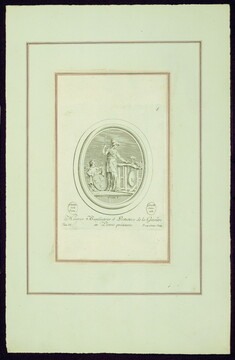
Minerva, Benefactor and Patron of Carving on Precious Stones, from Madame de Pompadour's "Suite of Prints"
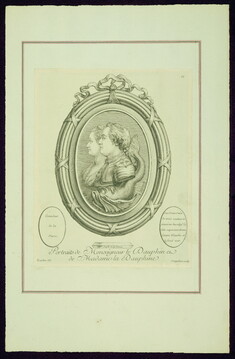
Portraits of Monseigneur le Dauphin and of Madame la Dauphine, from Madame de Pompadour's "Suite of Prints"
